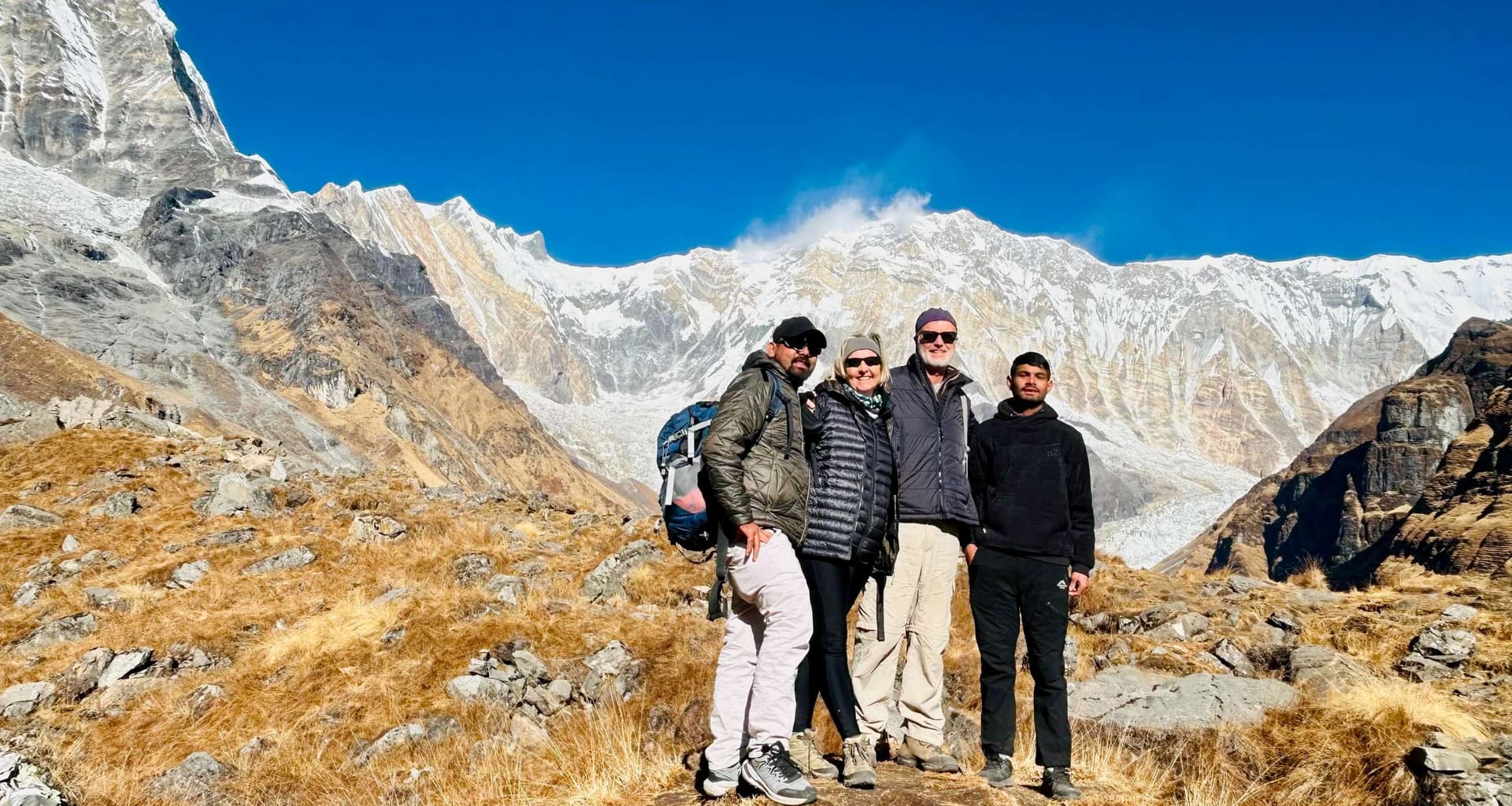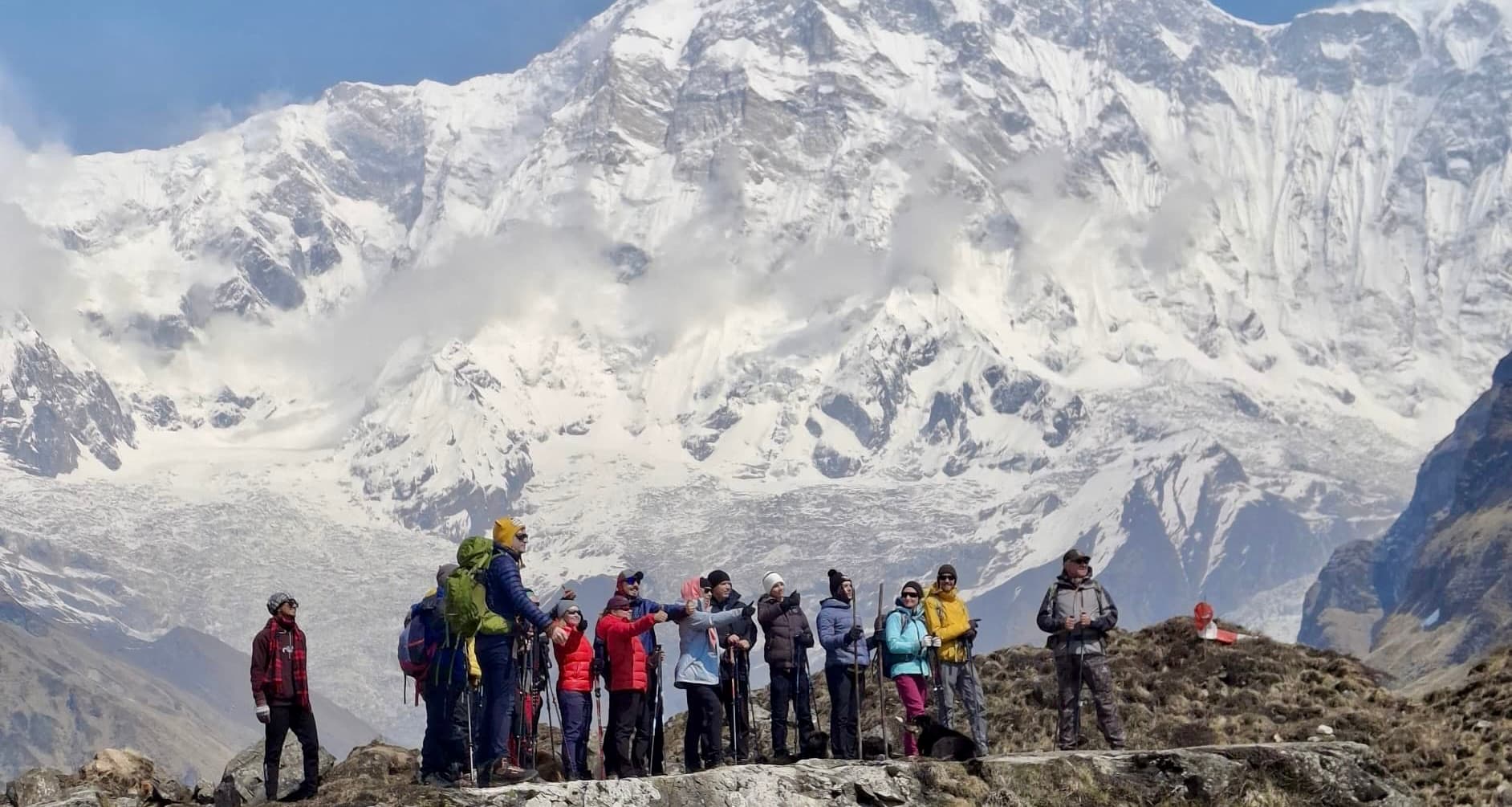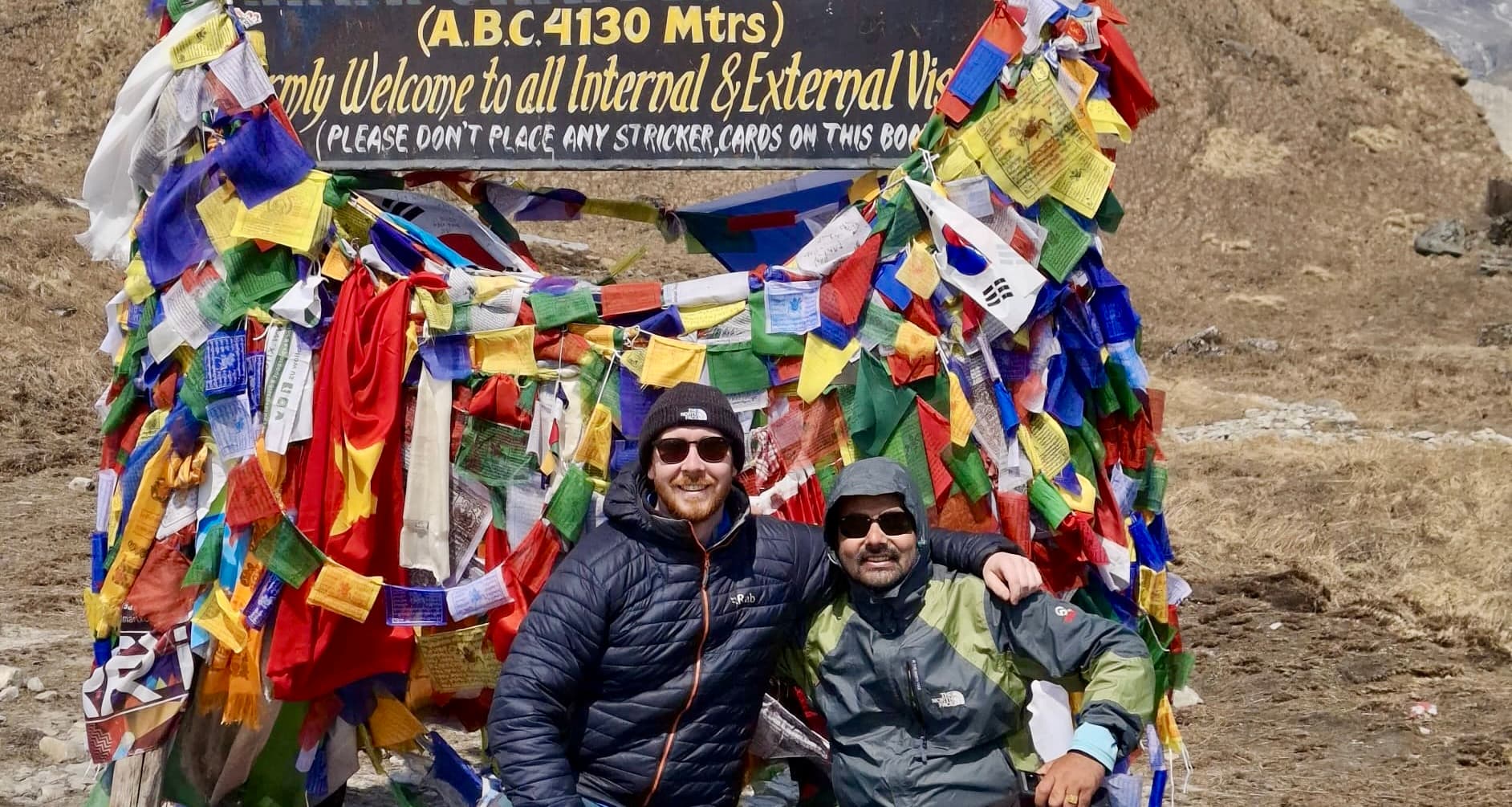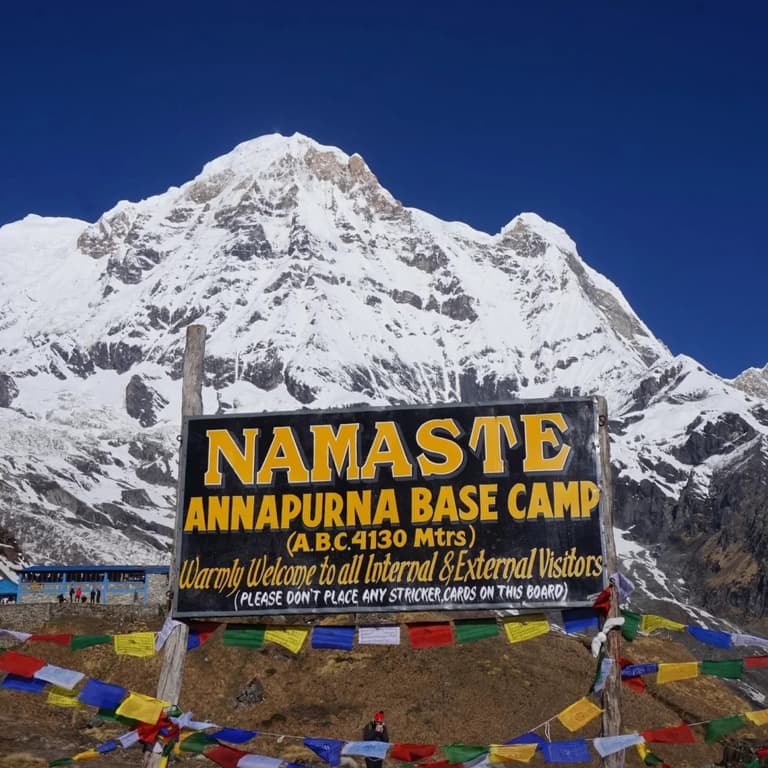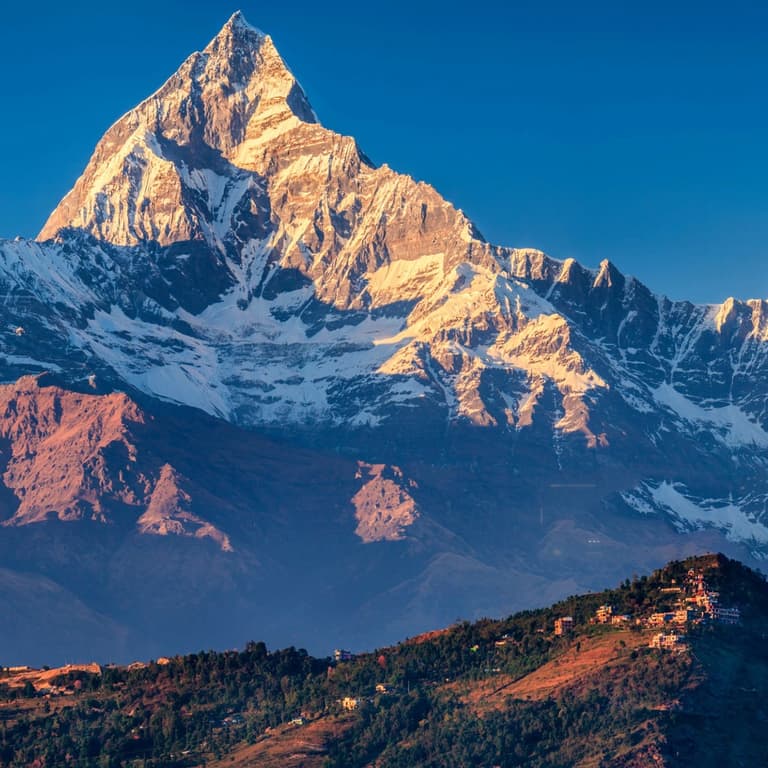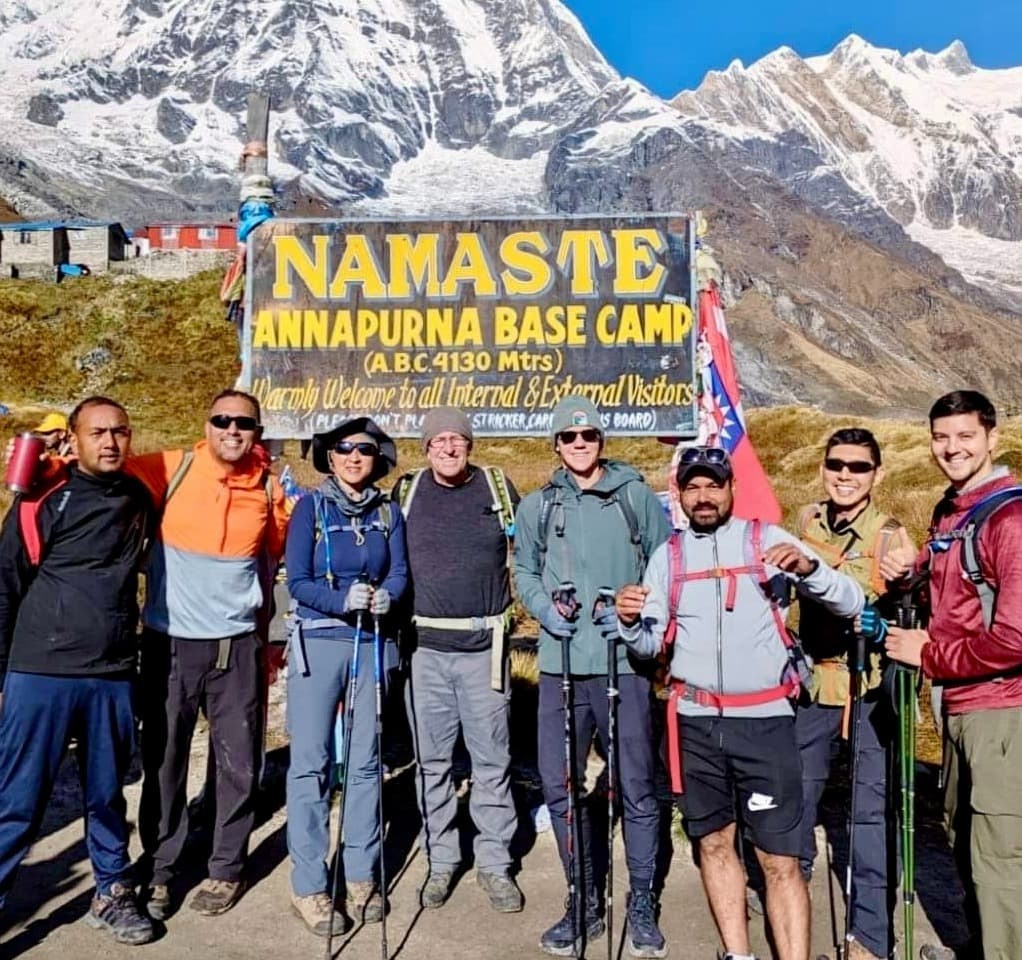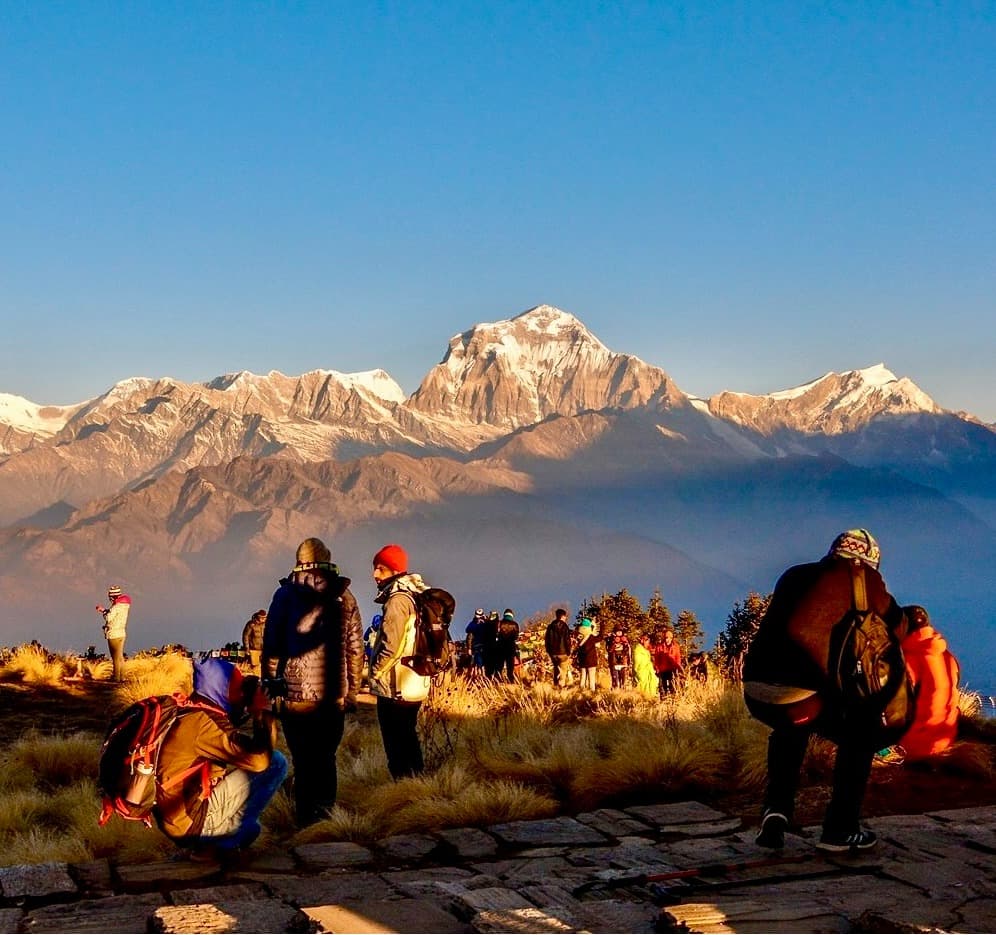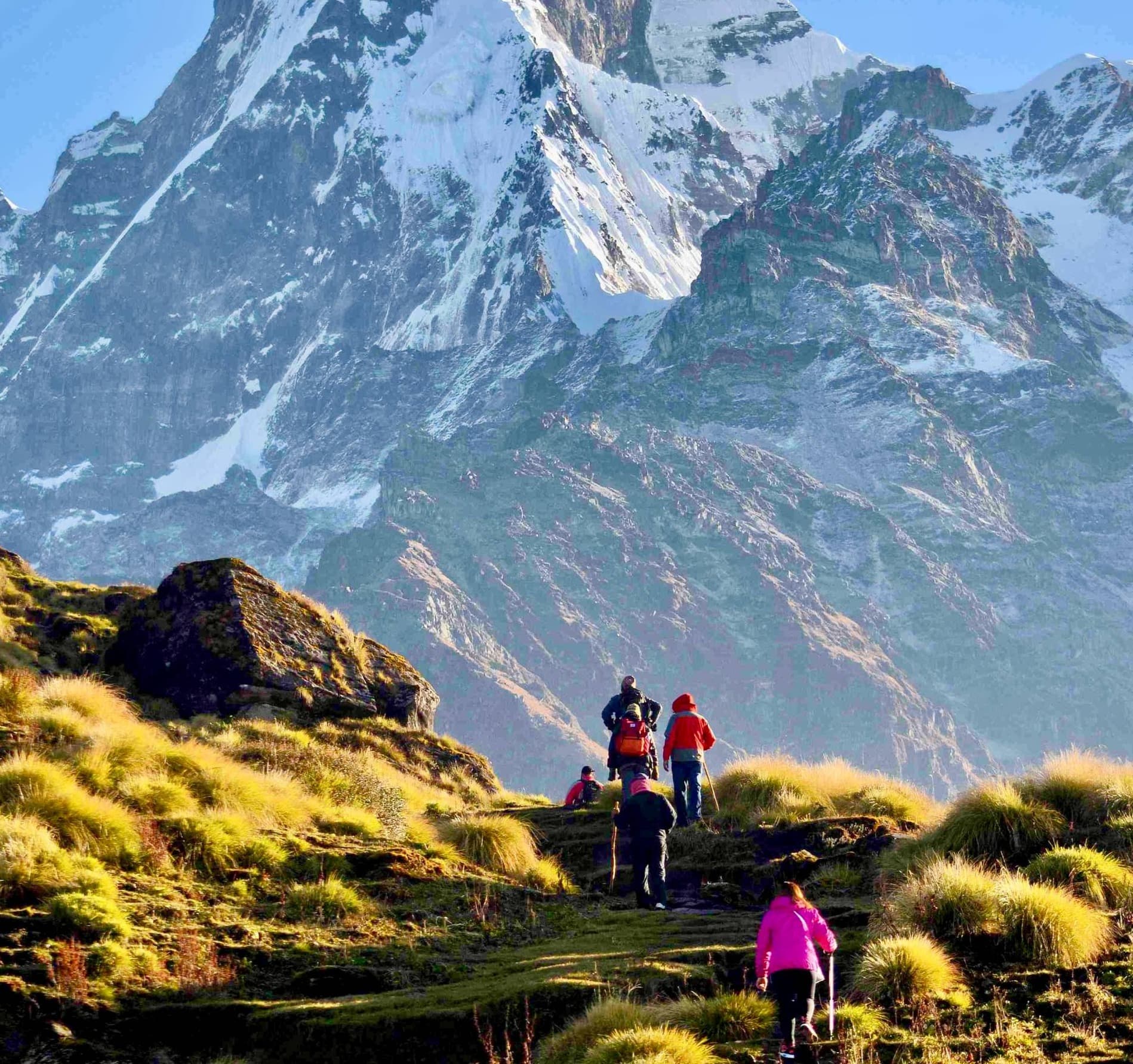The Annapurna Base Camp Trek is a captivating 10-day journey that takes you through the heart of the Annapurna region, blending diverse landscapes, vibrant cultures, and breathtaking Himalayan vistas. Starting with a scenic flight from Kathmandu to Pokhara, the trek leads you through charming villages like Ghandruk and Chhomrong, where you can experience the rich traditions and warm hospitality of the Gurung community. The trail meanders through lush rhododendron forests, cascading waterfalls, and high suspension bridges, offering a close encounter with the exotic flora and fauna of the Annapurna Conservation Area. Highlights along the way include the rejuvenating Jhinu Hot Springs and the awe-inspiring base camps of Machhapuchhre and Annapurna, with stunning views of towering peaks such as Annapurna South, Annapurna I, and Hiunchuli.
Reaching Annapurna Base Camp, situated at 4,130 meters, is an exhilarating achievement, providing a profound sense of accomplishment against the backdrop of majestic snow-capped peaks. The trek is best undertaken during spring (March to May) and autumn (September to November), when clear skies and favorable weather enhance the experience. Accommodations along the route range from basic teahouses to comfortable lodges, ensuring a restful recovery after each day’s adventure. Combining physical challenge, cultural immersion, and natural beauty, the Annapurna Base Camp Trek offers an unforgettable journey that resonates with trekkers and adventure enthusiasts worldwide.
Highlights of the Annapurna Base Camp Trek
The Annapurna Base Camp Trek is one of Nepal's most beloved hiking routes, offering an array of stunning highlights that captivate trekkers from around the world. Here are the top 10 highlights of this spectacular trek:
-
Pokhara: The gateway to the Annapurna region, this picturesque city offers serene lake views, a laid-back atmosphere, and spectacular mountain backdrops, making it an ideal starting point for the trek.
-
Ghandruk Village: A beautiful Gurung village that offers an authentic glimpse into the rural lifestyles of the Annapurna region, complete with traditional stone houses and incredible views of the Annapurna South and Machhapuchhre.
-
Chhomrong: Situated at the base of Hiunchuli, this village provides one of the best vantage points for stunning views of the Annapurna and Machhapuchhre peaks, and is known for its warm hospitality.
-
Machhapuchhre Base Camp (MBC): At an elevation of 3,700 meters, MBC offers breathtaking close-up views of Machhapuchhre, alongside other Himalayan giants, in a serene and somewhat surreal setting.
-
Annapurna Base Camp (ABC): The ultimate destination of the trek at 4,130 meters, surrounded by a ring of impressive peaks, including Annapurna I, Annapurna South, and Hiunchuli, providing a 360-degree panorama that’s truly awe-inspiring.
-
Jhinu Danda Hot Springs: After days of trekking, the natural hot springs near Jhinu Danda offer a soothing and rejuvenating experience for weary trekkers.
-
Flora and Fauna: The trek moves through diverse ecological zones, from lush subtropical forests to alpine woodlands, allowing trekkers to experience a rich variety of flora and the chance to spot exotic wildlife.
-
Suspension Bridges: Crossing several suspension bridges over rivers like Modi Khola adds an element of adventure and provides picturesque moments against the backdrop of deep gorges and rushing waters.
-
Poon Hill: Though not on the classic ABC trek route, many opt to include a detour to Poon Hill, renowned for its spectacular sunrise views over the entire Annapurna and Dhaulagiri ranges.
-
Nepalese Culture and Hospitality: Throughout the trek, interactions with the local Gurung and Magar communities provide insights into the local customs and traditions, enriched by the legendary hospitality of the Nepalese people.
Each of these highlights contributes to the unforgettable nature of the Annapurna Base Camp Trek, making it a top choice for trekkers seeking both challenge and reward in the Himalayas.
Annapurna Base Camp Trek Route Overview
The Annapurna Base Camp Trek, one of Nepal's most famed hiking routes, offers trekkers an enchanting mix of natural beauty and cultural richness. The journey begins in the vibrant city of Pokhara, the gateway to the Annapurna Circuit, followed by a drive to Nayapul which marks the starting point of the trek. The route winds through diverse landscapes, from lush terraced fields and dense rhododendron forests to rugged mountain terrain, leading up to Ghorepani. A predawn hike to Poon Hill from Ghorepani is a highlight, offering panoramic sunrise views over the Himalayas. The trek continues through traditional Gurung villages like Tadapani and Chhomrong, providing insights into the local lifestyle against the backdrop of towering peaks such as Annapurna South and the iconic Machhapuchhre (Fishtail Mountain).
The ascent progresses, reaching higher altitudes as trekkers move through Bamboo and Deurali, culminating in the arrival at Annapurna Base Camp. This segment of the trek is especially breathtaking with its 360-degree views of the Annapurna mountain range. The journey from Annapurna Base Camp back down retraces its steps to Bamboo, then descends to Jhinu Danda, where trekkers can relax in natural hot springs. The final leg returns to Nayapul and then back to Pokhara, where many trekkers choose to spend a day recuperating and enjoying leisure activities around the serene Phewa Lake. This trek not only challenges the body but also delights the soul, offering an unforgettable adventure through some of the most spectacular landscapes in the world.
Trip Alternative Options for Annapurna Base Camp Trek
-
Ghorepani Poon Hill Trek: Ideal for those seeking a shorter and relatively easy trek, this route offers panoramic views of the Annapurna range from Poon Hill, famous for its stunning sunrises. It typically takes 4-5 days and passes through beautiful rhododendron forests and charming Gurung villages.
-
Annapurna Circuit Trek: A more extensive and challenging alternative, this trek circles the entire Annapurna massif, offering a diverse range of landscapes, from lush subtropical forests to arid high-altitude plateaus. It takes about 18-21 days and crosses the Thorong La Pass, one of the highest trekking passes in the world.
-
Mardi Himal Trek: A less crowded alternative to the classic treks, Mardi Himal provides a quiet route that offers close-up views of Machhapuchhre, Annapurna South, and Hiunchuli. The trek can be completed in 5-7 days, traversing through dense forests and alpine landscapes.
-
Annapurna Sanctuary Trek: This trek is a variation that focuses solely on reaching the Annapurna Base Camp through a direct route, suitable for those who have limited time but wish to experience the core of the Annapurna region. It takes about 8-12 days and offers excellent views and a profound sense of the vastness of the mountain sanctuary.
-
Annapurna in Luxury - 11-Day Trek: This luxurious option provides an elevated trekking experience with stays in high-end lodges and enhanced services throughout the journey. This 11-day trek not only offers the scenic beauty and cultural depth of the Annapurna region but does so with additional comfort, making it ideal for those who wish to enjoy the mountains without forgoing the luxuries of high-quality accommodations and services.
If you need any further information, please contact us by email: at [email protected], Phone: at +977- 985 100 5129 (WhatsApp)

